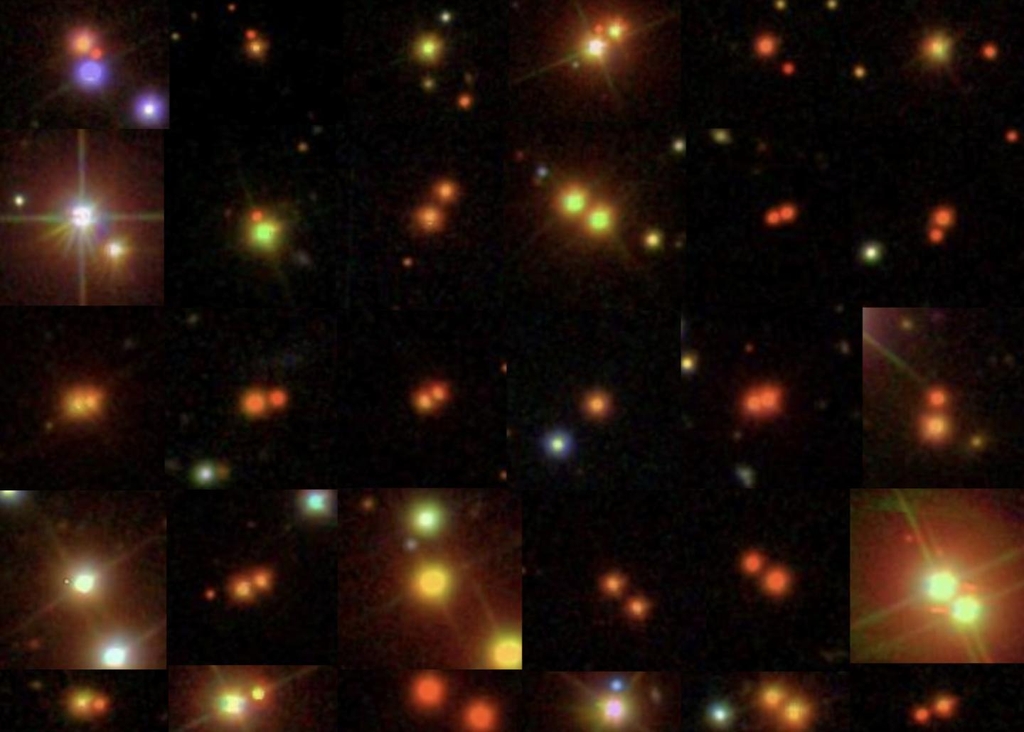Checked in the catalog of 1.8 billion stars released by Gaia satellite
Most of them exist within 1,000 AU of pairs … some 3.26 light years away

[ESA/Gaia/DPAC 제공/ 재판매 및 DB 금지]
(Seoul = Yonhap News) Reporter Nam-Seok Eom = Although there is only one star in the solar system, there are 1.3 million binary systems that form a pair of two stars near the Earth and orbit a common center of gravity at regular intervals.
This is based on observations from the Gaia satellite, which is making a 3D map of the stars of our galaxy.
Compared to the only 200 binary stars identified using data from the former Gaia satellite’Hipparcos’, this is a huge increase.
According to the University of California at Berkeley (UC Berkeley), Karim L-Bardry, a graduate student in astrophysics at the University of California, has published a catalog of binary stars within 3,000 light-years identified based on Gaia satellite data through the Royal Astronomical Society Monthly Report (MNRAS). .
The Gaia satellite launched in December 2013 by the European Space Agency (ESA) observes the position and movement of stars, luminosity, and color (surface temperature) from the second point in Lagrange (L2) where the gravitational forces of the Earth and the sun are balanced. And has released observation data three times so far.
During the first release of the third episode in December last year, over 1.8 billion star catalogs were released.
The research team analyzed the catalog and found 1.8 million candidates likely to be binary stars moving in similar directions at the same distance. Among them, 1.3 million binary systems with a probability of at least 90% were excluded, excluding stars that may have accidentally shown similar directions and movements.
The research team suggested that about 1.1 million of them have a binary system probability of 99%.
“Half of the sun-like stars are binary systems, and many of them are too close to be distinguished,” El-Bardri said. “25% of the sun-like stars are 30 AU (astronomical units) away from the Sun to Pluto. They have mate stars, and they found the most concentrated between 30 and 50 AU.”
In some binary star systems, the distance between pairs reached 260,000 AU (3.26 light-years, 1 parsec), but most were analyzed to be within 1,000 AU.

[Kareem El-Badry, UC Berkeley 제공/ 재판매 및 DB 금지]
In particular, the researchers confirmed that stars in binary systems have very similar masses.
This was looming when the 2nd observation data was released in 2018, and this became more evident through the 1st data disclosure for the 3rd.
L-Bardry said that there may be differences in mass as binary stars are hundreds to thousands of AU apart, but they are similar as if they know the mass of the mating star.After they were made much closer enough to have the same mass, they were made farther away by interaction with other nearby stars. It was analyzed that it may have fallen.
The research team predicted that 17,000 of the binary star systems listed in the catalog will have white dwarfs, which will be valuable data that can be used for astronomical research.
A white dwarf is a blue-white star that most stars meet in the final stages of stellar evolution, and the sun will end its life as a white dwarf star in which the surface layer material is released into the planetary nebula and the remaining material degenerates 5 billion years later. This star is relatively easy to measure when it was formed and its mass, so it serves to provide information about companion stars or planets in a binary system.
About 1,400 of the binary systems including white dwarfs discovered by L-Bardry are both white dwarfs, and about 16,000 are composed of only one white dwarf.
Video article

[Animation by Jackie Faherty, AMNH, based on data by Kareem El-Badry, UC Berkeley 제공/ 재판매 및 DB 금지]
Unauthorized reproduction-prohibition of redistribution>
2021/02/23 15:41 sent
